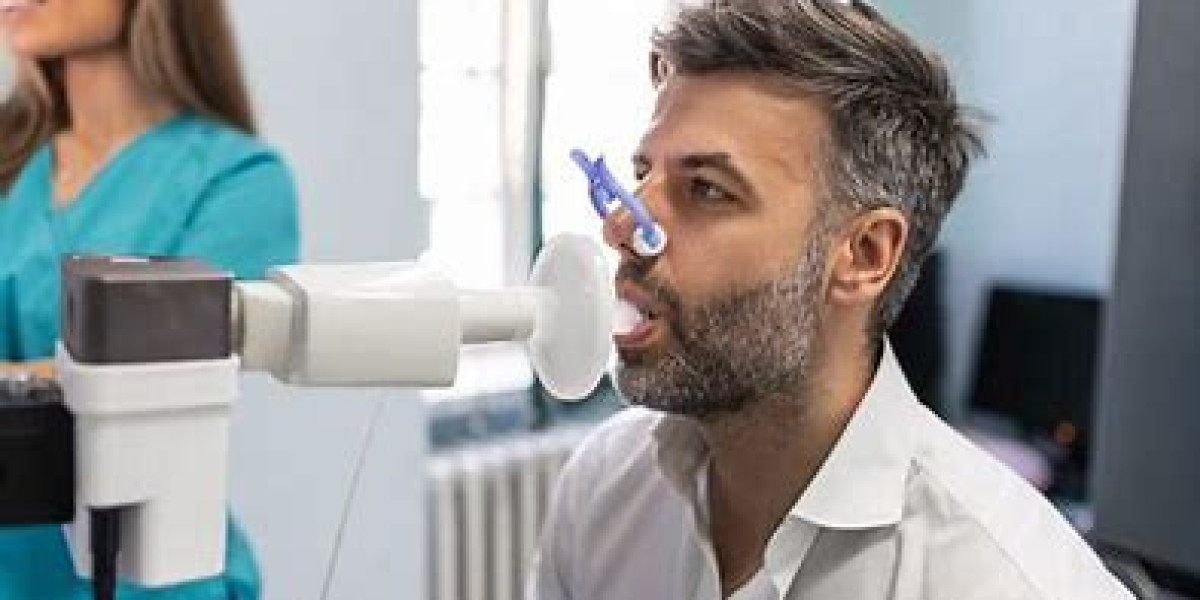Introduction
Pulmonary Function Testing (PFT) is a crucial diagnostic tool used to assess lung health and detect respiratory disorders. Whether you're experiencing shortness of breath, chronic cough, or other breathing difficulties, PFT helps healthcare providers evaluate lung function, diagnose conditions like asthma and COPD, and monitor treatment effectiveness.
In this comprehensive guide, we’ll explore:
What Pulmonary Function Testing is
Different types of PFTs
Who needs testing and why
How to prepare for a PFT
Understanding test results
Frequently asked questions
By the end, you’ll have a clear understanding of how PFTs work and their importance in respiratory care.
What is Pulmonary Function Testing (PFT)?
Pulmonary Function Testing is a non-invasive procedure that measures how well your lungs work. It evaluates:
Lung capacity – How much air your lungs can hold
Airflow rates – How quickly you can inhale and exhale
Gas exchange efficiency – How well oxygen enters your bloodstream
PFTs are commonly used to diagnose conditions such as:
Asthma
Chronic Obstructive Pulmonary Disease (COPD)
Pulmonary fibrosis
Cystic fibrosis
Restrictive lung diseases
Types of Pulmonary Function Tests
There are several types of PFTs, each serving a unique purpose:
1. Spirometry
Purpose: Measures airflow and lung volume.
Procedure: You’ll breathe into a mouthpiece attached to a spirometer, performing forced inhalations and exhalations.
Key Measurements:
Forced Vital Capacity (FVC) – Total air exhaled forcefully
Forced Expiratory Volume in 1 second (FEV1) – Air exhaled in the first second
FEV1/FVC Ratio – Helps differentiate obstructive vs. restrictive lung diseases
Common Uses: Diagnosing asthma, COPD, and evaluating pre-surgical lung function.
2. Lung Volume Testing
Purpose: Measures total lung capacity (TLC) and residual volume (RV).
Methods:
Body Plethysmography – You sit in a sealed booth and breathe against a closed shutter.
Helium Dilution or Nitrogen Washout – Measures lung volume using gas concentrations.
Common Uses: Diagnosing restrictive lung diseases like pulmonary fibrosis.
3. Diffusion Capacity Test (DLCO)
Purpose: Evaluates how well oxygen passes from the lungs into the bloodstream.
Procedure: You inhale a small amount of carbon monoxide (safe levels) and hold your breath for 10 seconds.
Common Uses: Detecting emphysema, pulmonary hypertension, and interstitial lung disease.
4. Bronchial Provocation Test
Purpose: Assesses airway responsiveness (used for asthma diagnosis).
Procedure: You inhale substances like methacholine to see if airways narrow.
Common Uses: Confirming asthma when symptoms are unclear.
5. Exercise Stress Test
Purpose: Evaluates lung function during physical activity.
Procedure: You’ll walk on a treadmill or ride a stationary bike while breathing is monitored.
Common Uses: Diagnosing exercise-induced asthma or unexplained shortness of breath.
Who Needs a Pulmonary Function Test?
Your doctor may recommend a PFT if you have:
✔ Chronic cough or wheezing
✔ Shortness of breath
✔ A history of smoking
✔ Exposure to lung-damaging pollutants (asbestos, coal dust)
✔ A family history of lung disease
✔ Scheduled for major surgery (to assess anesthesia risk)
According to the CDC, over 16 million Americans have COPD, many undiagnosed—highlighting the importance of early PFT screening.
How to Prepare for a Pulmonary Function Test
To ensure accurate results:
✅ Avoid smoking for at least 24 hours before the test.
✅ Skip heavy meals and caffeine 4-6 hours prior.
✅ Wear loose clothing for unrestricted breathing.
✅ Inform your doctor about medications (some bronchodilators may need pausing).
Understanding Your PFT Results
PFT results are compared to normal values based on age, sex, height, and ethnicity. Abnormal findings may indicate:
| Condition | FEV1/FVC Ratio | FVC | DLCO |
|---|---|---|---|
| Normal | ≥ 0.70 | Normal | Normal |
| Obstructive (COPD, Asthma) | < 0.70 | Normal/Reduced | Reduced (in COPD) |
| Restrictive (Pulmonary Fibrosis) | ≥ 0.70 | Reduced | Reduced |
Your doctor will explain results and recommend treatment if needed.
Frequently Asked Questions (FAQs)
1. Is Pulmonary Function Testing painful?
No, PFTs are non-invasive and painless, though some tests may require forceful breathing.
2. How long does a PFT take?
Most tests take 30-90 minutes, depending on the type.
3. Are there risks involved?
PFTs are safe, but those with severe heart conditions should consult their doctor.
4. Can children undergo PFTs?
Yes, specialized pediatric PFTs are available for kids as young as 5 years old.
5. Does insurance cover PFTs?
Most insurance plans cover PFTs if medically necessary—check with your provider.
Conclusion
Pulmonary Function Testing is a vital tool for diagnosing and managing lung diseases. Whether you're at risk for COPD, experiencing unexplained breathlessness, or preparing for surgery, PFTs provide critical insights into your respiratory health.
If you suspect lung issues, consult a pulmonologist and discuss whether a PFT is right for you. Early detection can significantly improve quality of life and treatment success.
Need a Pulmonary Function Test? Contact a certified pulmonary lab near you for expert evaluation.







